China is one of the oldest civilizations in the world with a history of over 5000 years. This legacy has left its mark on China’s urban landscape in the form of breath-taking, awe-inspiring buildings. These buildings have not only become some of the world’s most popular tourist destination, but a symbol for China’s great history more generally. Here is a list translated from ifeng.com of China’s top ten most beautiful landmark buildings.
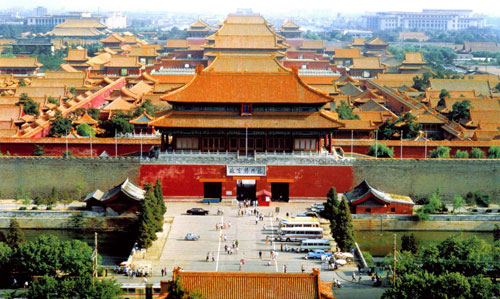
1) The Forbidden City, Beijing 故宫--北京
It’s not surprising that the world famous Forbidden City should make it to number one on the list. The Forbidden City contains the world’s largest group of classical palace buildings. The traditional buildings which served as the Chinese Imperial Palace from the Ming Dynasty to the Qing Dynasty, is known by all far and wide. It has not only come to represent China’s great history, but has since also become a landmark symbol for Beijing more generally. Even though Beijing is fast becoming a modern, urban metropolis, the Forbidden City’s position as iconic landmark will never change.
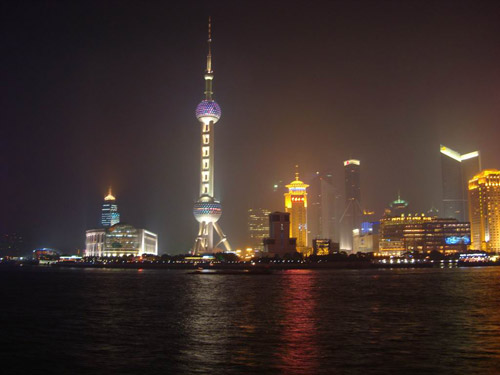
2) The Bund, Shanghai外滩--上海
Technically a whole block of buildings, in terms of collections of landmark buildings, The Bund is Shanghai’s equivalent to Beijing’s Ming and Qing Dynasty representatives. Long considered China’s ultimate representation of modern civilization, Shanghai’s Bund now boasts a large number of exquisite, historical buildings as well as modern ones such as those in Pudong. The Bund without a doubt represents Shanghai’s vigor and soul. Countless European style buildings can be found here, but at the same time it also reflects China’s traditional culture. Although the Bund is probably Shanghai’s most popular tourist destination, it can’t compare to the Forbidden City in terms of embodying Chinese culture and therefore takes the second spot on this list.
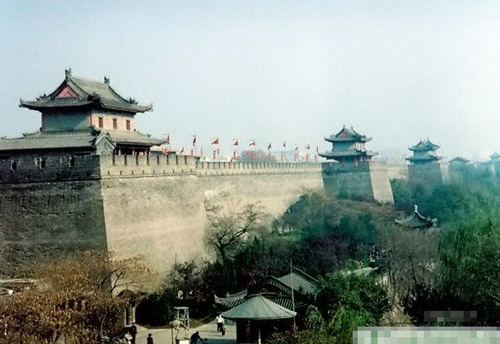
3) The City Wall, Xi’an 城墙--西安
Obviously the historic city of Xi’an cannot be missing from the list. Although the city’s crown has since been taken by Beijing and Shanghai, several thousand year history cannot be over-looked. The terracotta warriors are located nearby but these don’t count as buildings and other temples and pagodas are mainly small in scale. However, Xi’an’s city wall is the most complete city wall to have survived in China and it is also one of the largest ancient military defense systems still standing. Because it’s not as aesthetically pleasing when compared to the other two, Xi’an ranks number three on the list.
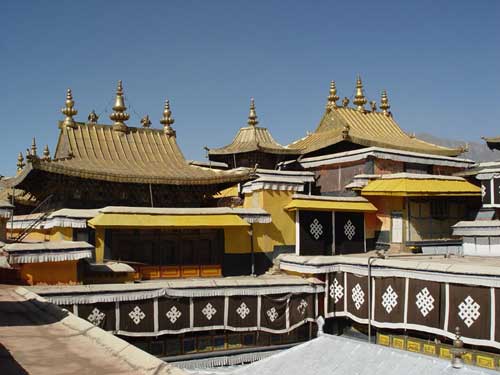
4) Potala Palace, Lhasa 布达拉宫--拉萨
Potala Palace’s history is even longer than that of Beijing’s Forbidden City. Its architectural style is distinct and admired for its uniqueness both from within China and abroad. Potala Palace, meaning “the sacred land of Buddhism” has long become a sacred symbol of Tibet.
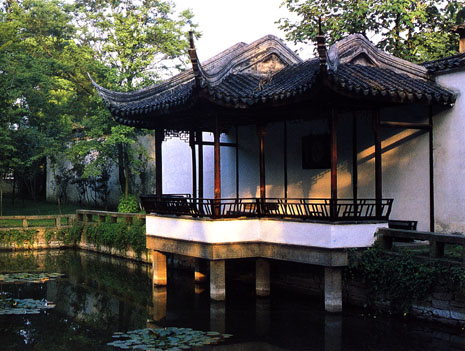
5) Suzhou Gardens, Suzhou 苏州园林--苏州
There aren’t many buildings within the gardens and such an area’s specialty is usually the scenery itself, therefore, Suzhou Gardens are a bit of a far stretch. However, due its special status as world heritage site and as the most famous representative of all China’s garden buildings, Suzhou Gardens has made it to number five on this list.
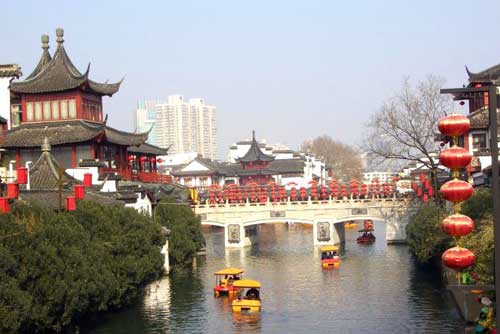
6) Confucius Temple, Nanjing 夫子庙--南京
It was a tough decision choosing between the Confucius Temple and the Sun Yat-Sen Mausoleum, but in the end it had to be the former because it best reflects Nanjing’s history and character. Its bright lights, luxurious grandeur and great vibes, as well as the fact that it is one China’s four great temples, attracts visitors from all over the world. Although its collection of classical Ming and Qing buildings are popular and admired throughout, its level of fame and influence is not yet as great as the others mentioned above however.
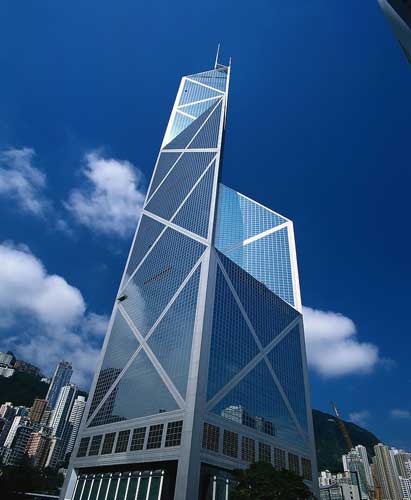
7) Bank of China Tower, Hong Kong 中银大厦--香港
Modern buildings should get a spot on this list too, and since Shanghai has already mentioned, the spot most be given to Hong Kong’s Bank of China Tower. A masterpiece designed by architect I.M. Pei, its artistic value is even greater than that of the famous Jinmao Tower in Shanghai. It is the most recognizable skyscraper in Hong Kong and its style can be described as avant-garde. This unique building has certainly become a symbol of Hong Kong.

8) The Ruins of St. Paul’s, Macau 大三巴牌坊--澳门
The Ruins of St. Paul’s, a famous historical site in Macau, was originally a cathedral dedicated to Saint Paul the Apostle. The building was originally designed by an Italian Jesuit priest who used the superb skills of Japanese craftsmen to build the cathedral. Looking at the cathedral from the roof down, the first thing you’ll see is a large cross. Underneath the cross, the cathedral is divided into three stories and each tier includes bas-reliefs with various bronze patterns. The holy cross has one bronze dove on it which is said to represent the Holy Spirit. Near the cross, one can see various stone carvings including images of the sun, the moon and the stars. A statue of baby Jesus also adorns the building’s facade as well as many other symbolic patterns. Nowadays, The Ruins of St. Paul’s has become one of the main symbols for Macau, as well as one of the most popular tourist destinations in the region.
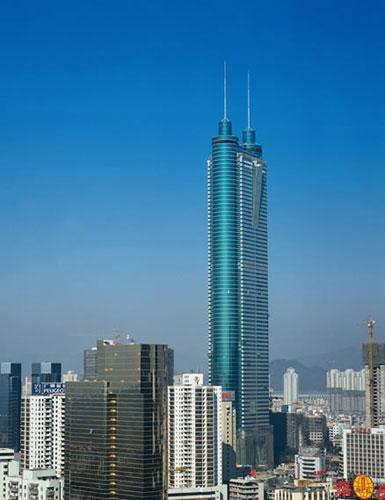
9) Diwang Building, Shenzhen 地王大厦--深圳
Located on Shenzhen Zhong Lu, the Diwang Building (Shun Hing Square) stands 420 metres and 81 stories tall. Construction was completed in 1996, and it was Asia’s tallest building at the time. It was also the first steel-structured skyscraper in China. Diwang Building is still the tallest building in Shenzhen today and is currently one of the world’s ten largest buildings.
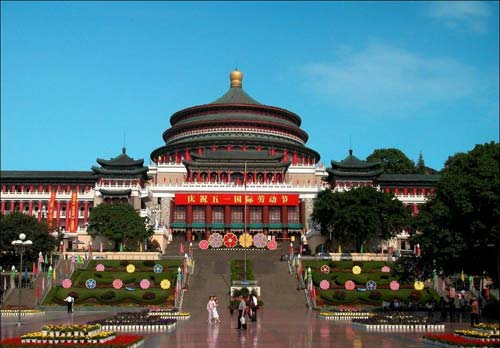
10) Great Hall of the People, Chongqing 人民大礼堂--重庆
The Great Hall of the People in Chongqing is quite an influential building within the country and has been called “One of Asia’s top ten classical buildings of the twentieth century.” In 1987, The Royal Institute of British Architects and University of London listed Chongqing’s Great Hall of the People as number two in their book titled “A History of World Architecture.” At present, the Great Hall is a protected cultural heritage site and has become an AAAA class tourism spot in China, attracting hundreds of thousands of foreign and domestic tourists every year.
Source: ifeng.com
Related Links
Top 10 Iconic City Landmarks in China
Sky-High Shanghai – Exploring the City's Tallest Buildings
Big Buildings, Big Bucks: The 10 Most Expensive Buildings in China
Warning:The use of any news and articles published on eChinacities.com without written permission from eChinacities.com constitutes copyright infringement, and legal action can be taken.
All comments are subject to moderation by eChinacities.com staff. Because we wish to encourage healthy and productive dialogue we ask that all comments remain polite, free of profanity or name calling, and relevant to the original post and subsequent discussion. Comments will not be deleted because of the viewpoints they express, only if the mode of expression itself is inappropriate.
Please login to add a comment. Click here to login immediately.